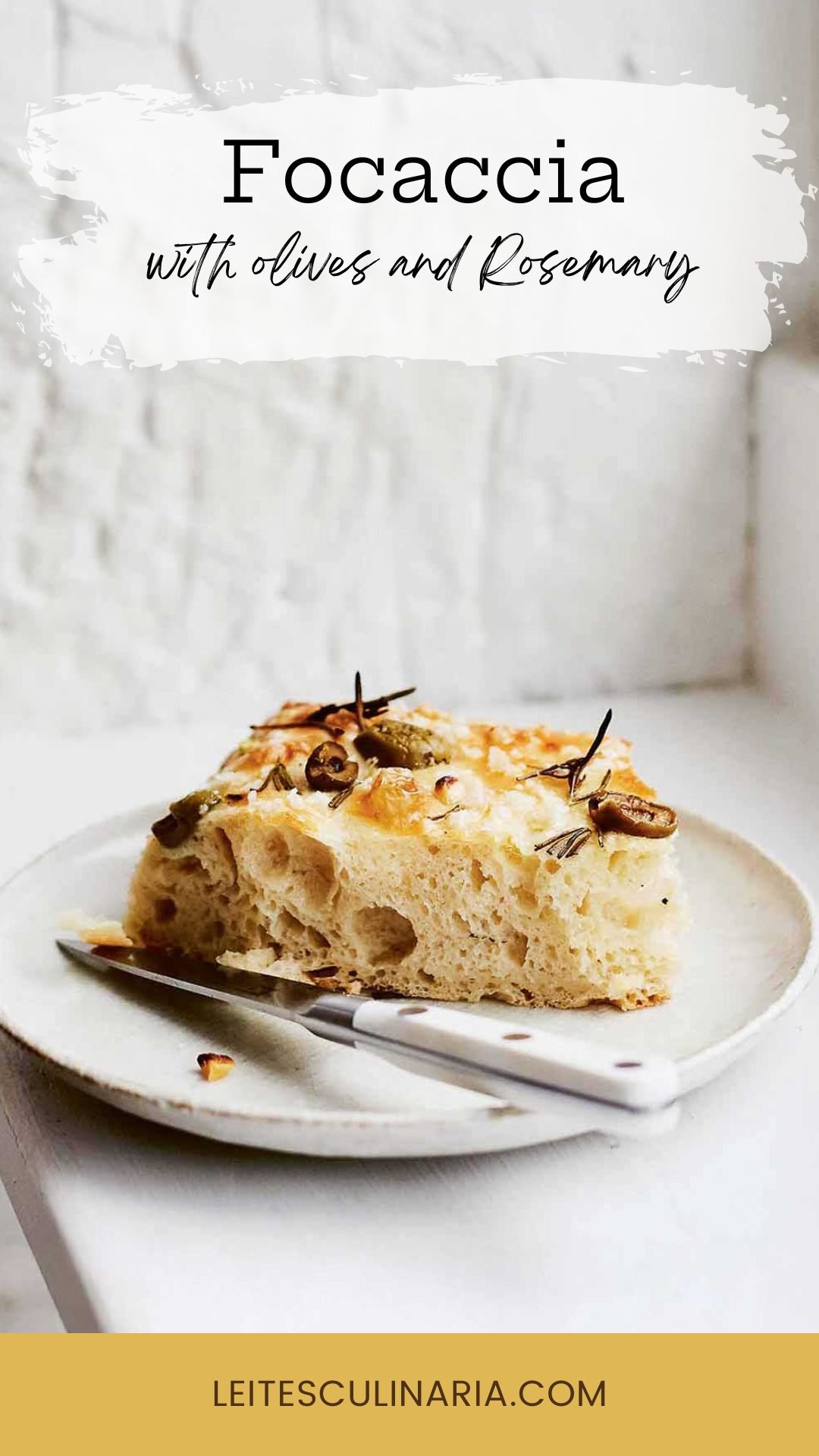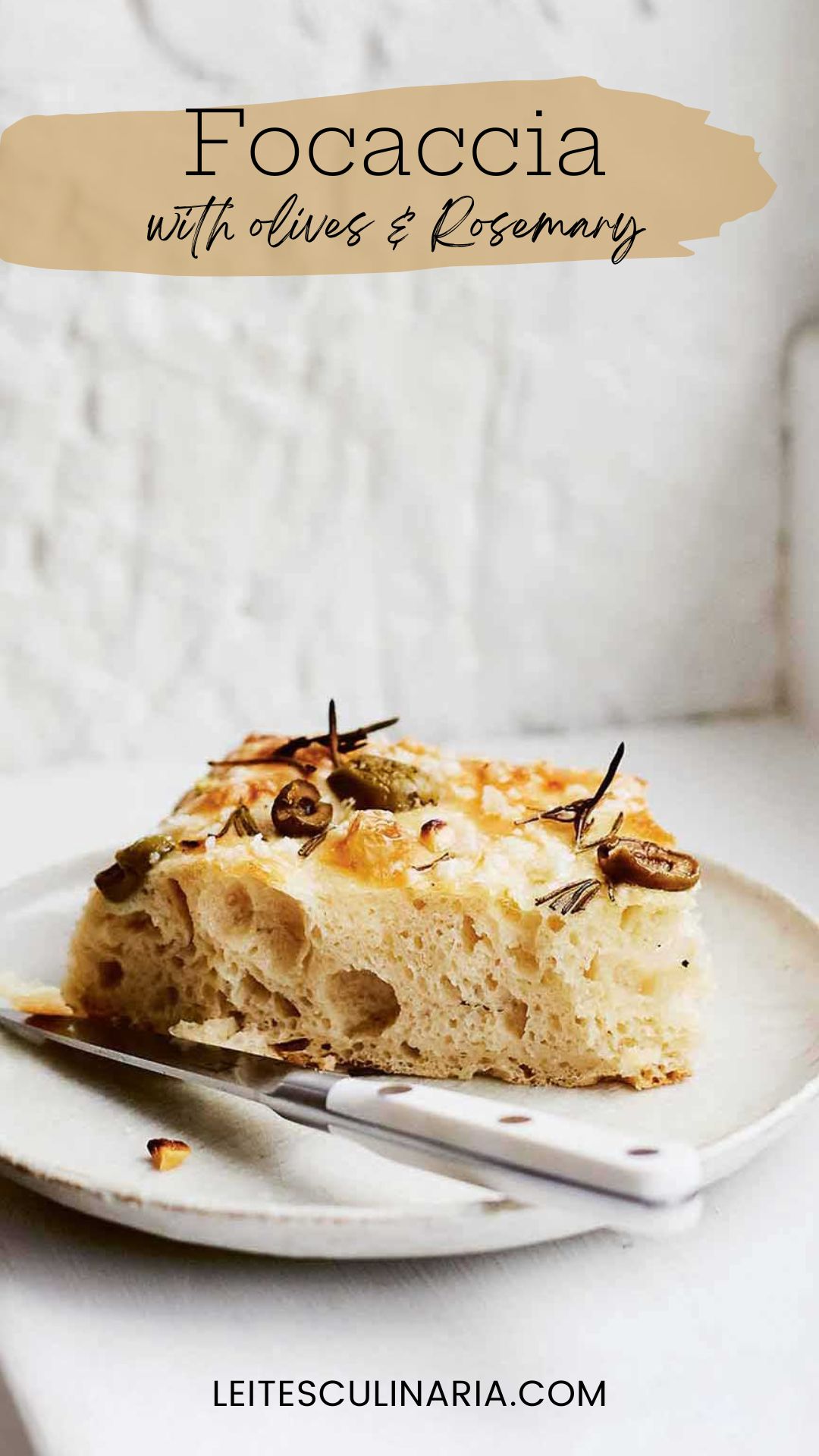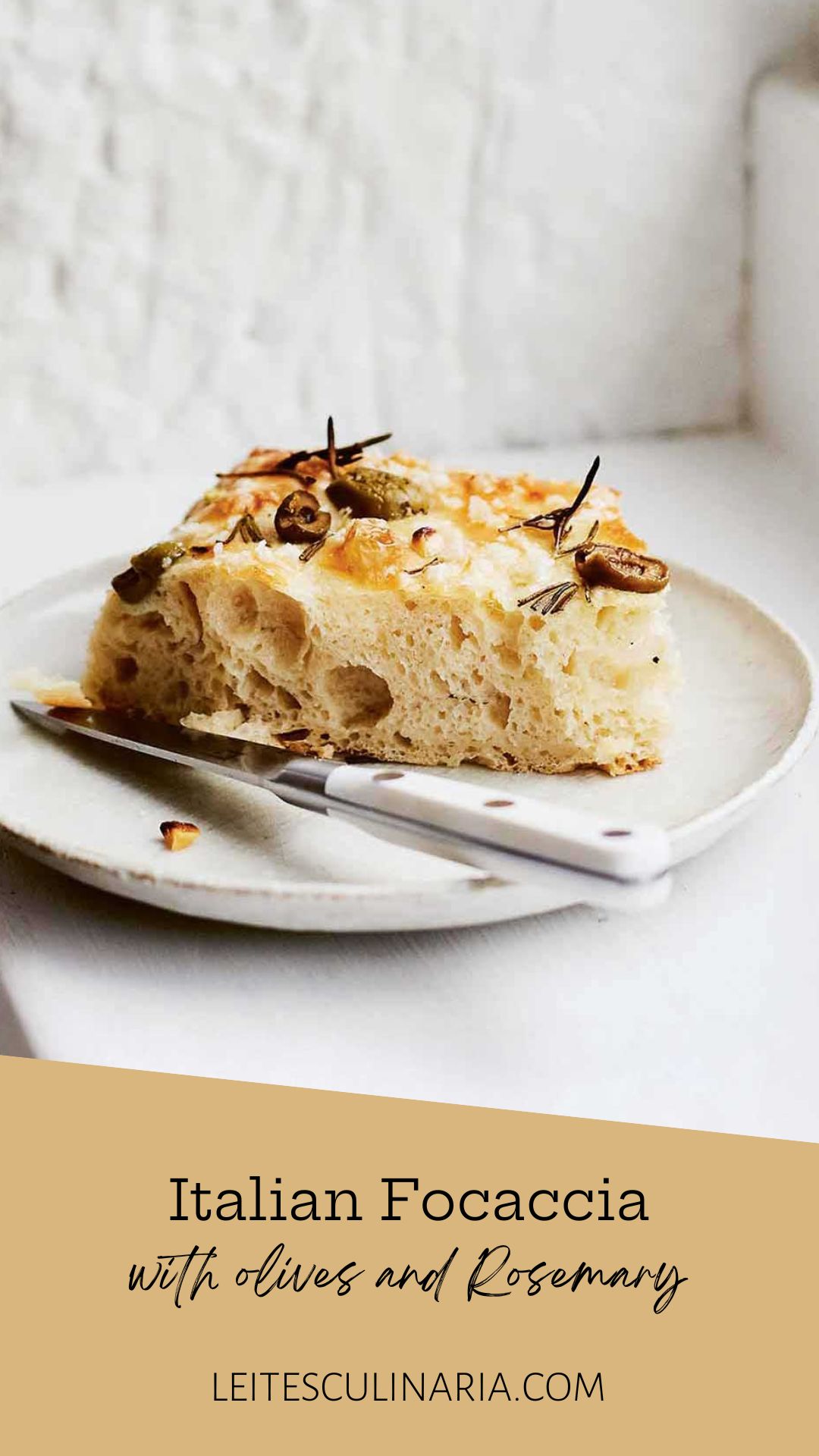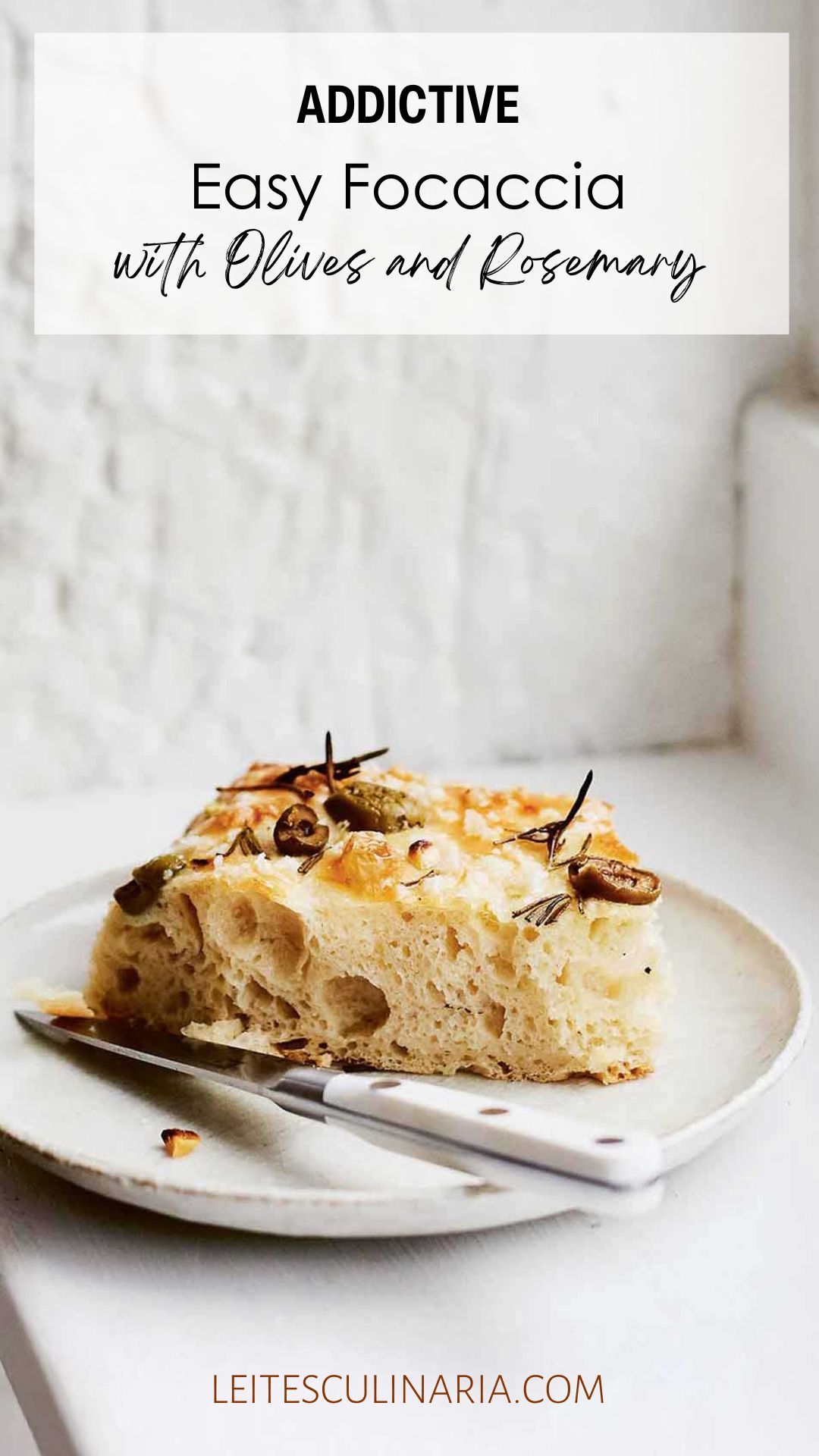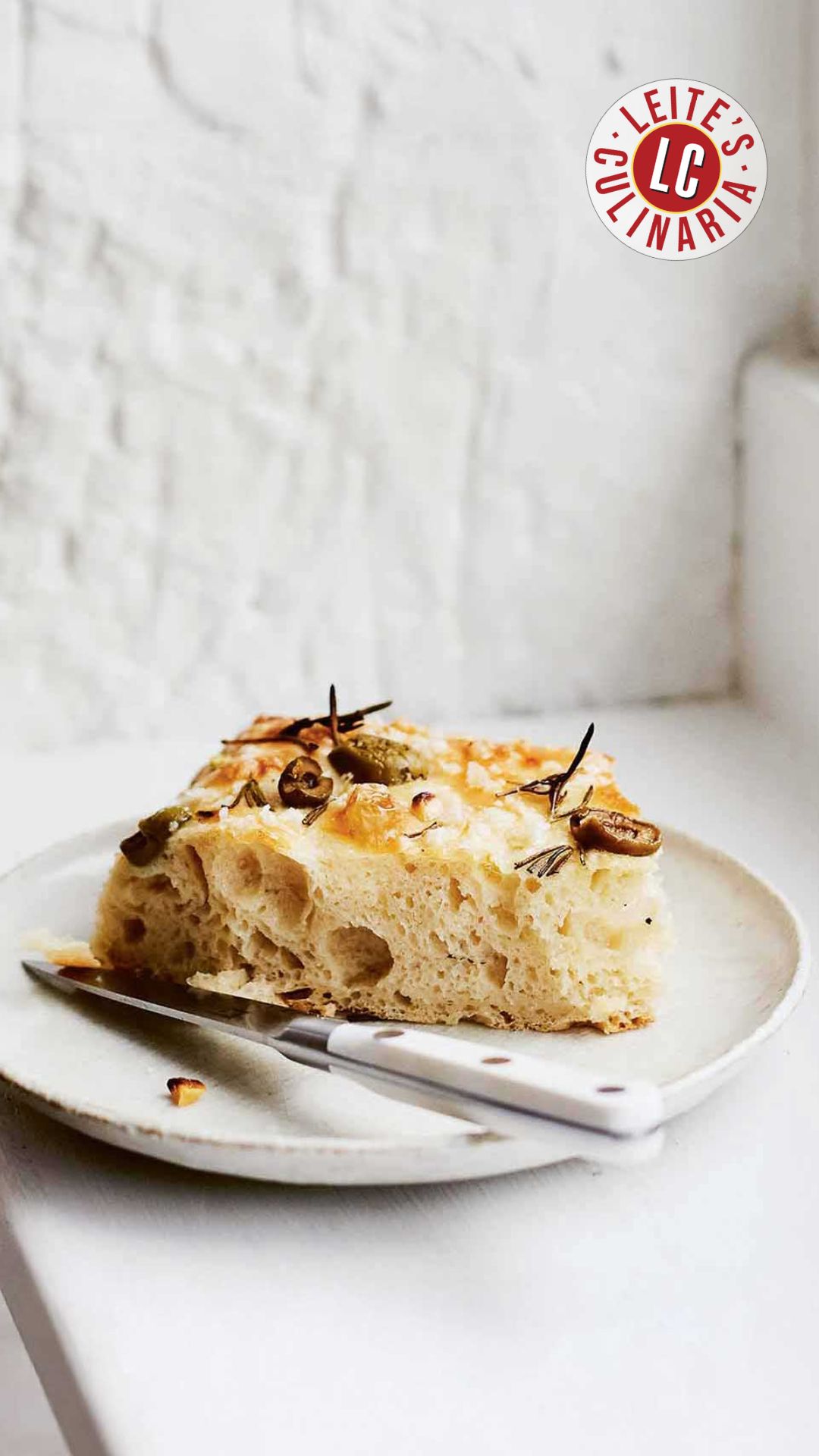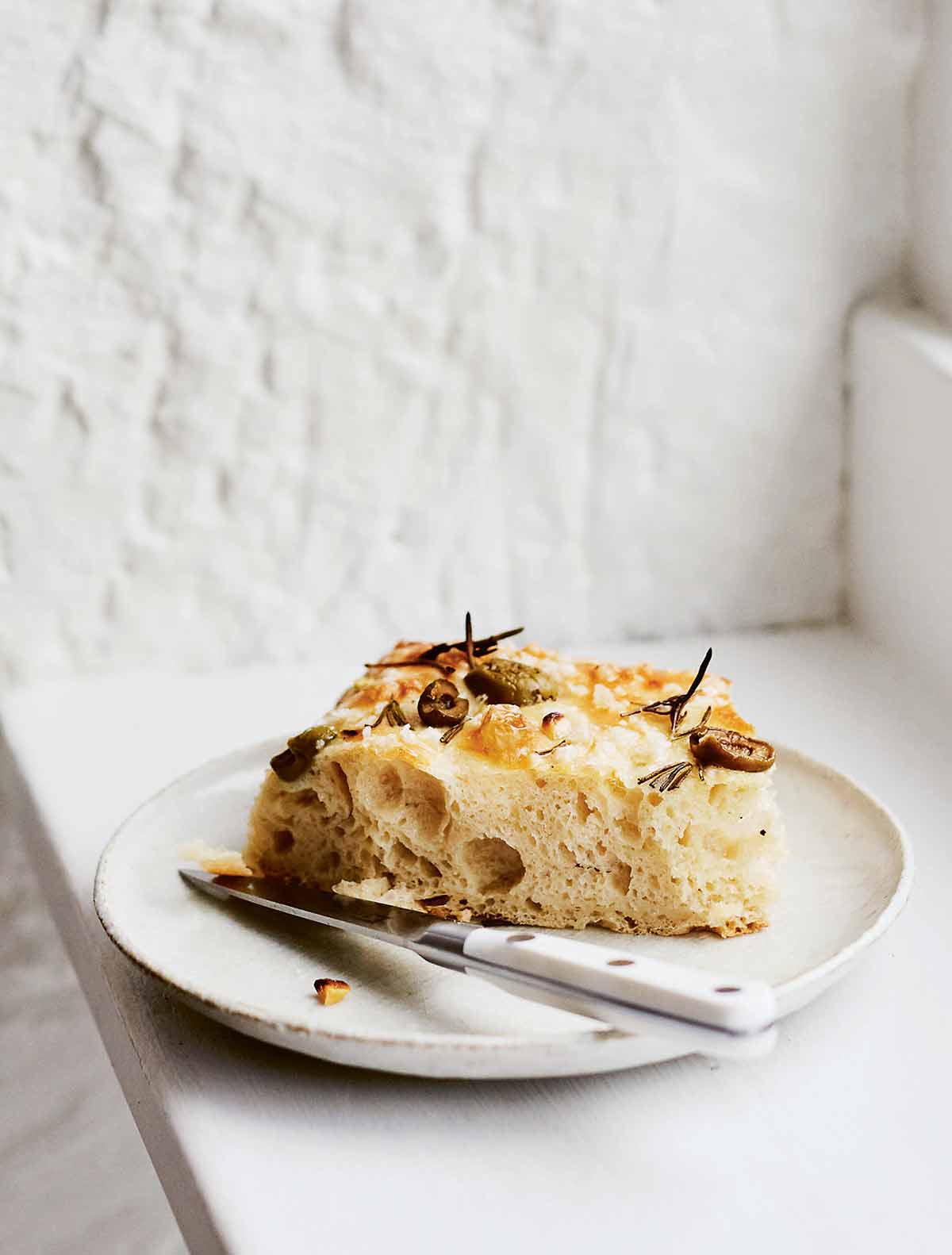
Ninety percent hydration means this dough is wild and wet. This helps to contribute to a damp, soft, open crumb that is bouncy in texture. Wetter is always better for focaccia, so it is worth taking your time when it comes to kneading this dough. You want to build up the gluten as much as possible to form a brilliantly elastic dough – the result will be all the chewier for it.–Flora Shedden
Why is Focaccia Dimpled?
True focaccia is massaged, stretched, and finally dimpled. And for good reason. Manipulating the dough helps to develop the gluten, giving it that recognizably chewy structure. The dimples reduce the air in the dough and prevent the dough from rising too quickly. This also helps prevent it from collapsing in the oven and provides more surface area for anything you want to add—like olives, caramelized onions, sun-dried tomatoes, or herbs.
Want to Save This?

Focaccia with Olives and Rosemary
Video
Ingredients
- 4 cups white bread flour
- 1 7/8 cups water
- 2 teaspoons kosher salt
- 1 generous teaspoon instant yeast
- 1 1/2 tablespoons extra virgin olive oil, plus more for the pan and drizzling
- Coarse sea salt, for sprinkling
- Finely chopped fresh rosemary
- Olives, sliced or halved
Instructions
- In the bowl of a stand mixer fitted with the dough hook, combine the flour, 1 2/3 cups water (400 g), salt, yeast, and olive oil.
- Mix on slow speed for 4 minutes, then turn the mixer up and mix on high speed for 6 minutes. Let the dough rest in the mixer for 15 minutes.
☞ TESTER TIP: The dough is very wet and sticky, so you’ll definitely want to let your stand mixer do the kneading as it’s quite difficult to do so by hand. (Don’t ask us how those Italian nonnas did it back in the day.)
- Restart the mixer on slow, add the remaining water, and mix for 4 minutes more.
- Dump the dough into a container, preferably plastic and with a lid, that’s large enough for the dough to at least double and let rise at warm room temperature. Use a spatula to fold the dough (in the container, if you can, without turning it onto a work surface) every 15 minutes. Let it rise for about 1 hour, until approximately doubled in size.
- Cover the container and refrigerate overnight.
- Two hours before baking, tip the dough into a lightly oiled 8-by-12-inch or 9-by-13-inch (20- by 30-cm or 23- by 33-cm) baking or sheet pan, and with wet hands stretch out the dough to fit the pan. Let it rest at room temperature for 2 hours, giving the dough a stretch every 30 minutes or so if it begins to shrink back from the sides of the pan.
- Thirty minutes before baking, preheat the oven to 450ºF (230°C).
- Sprinkle the top with salt and scatter with the rosemary and olives. Bake until cooked through and golden on the bottom when you lift a corner and peek, 17 to 20 minutes. Drizzle with extra virgin olive oil and serve.
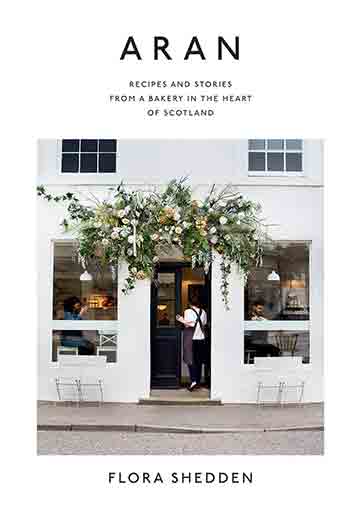
Explore More with AI
Nutrition
Nutrition information is automatically calculated, so should only be used as an approximation.
Recipe Testers’ Reviews
The smell of this focaccia baking is amazing and will transform your home into a bakery or pizzeria. The taste of it is just as good and won’t disappoint. The texture is crunchy on the outside soft but chewy on the inside. All around perfect!
The recipe is very easy and fun. I mixed my dough in a mixer. I let it proof for an hour while folding it every 15 minutes. The first 15 minutes it seemed to rise a bit, not a ton. After each fold, it seemed to rise about the same amount, which was about 1/4 more than original rise. When I finished all the folding, the dough was drier than when I started, but still moist. I did the windowpane test, which is pretty cool, and it worked. I stuck it in a plastic bowl and put it in the fridge.
This morning when I took it out, it had rose some more. I put it on the roasting pan and stretched it out every 30 minutes. Still being a little short on supplies these days, I only had black olives to top it with. I sprinkled it with sea salt and some herbs de Provence. The black olives were great on it, adding a nice touch of saltiness.
My focaccia baked for 20 minutes. After the first 15 minutes, I thought it looked too light in color so I left it in. After the next 5 minutes it still didn’t darken up but it was done at that point. I’m anxious to try again when I have more toppings like anchovies! Yes, more saltiness.
My husband and I have been nibbling on the focaccia all morning so serving size depends. Right now I would say 2! If you served it as a snack I say 4, with a meal 6. In this house? Probably just 2. Would be great with a nice glass of wine.
This focaccia bread is perfect. Perfect crumb, perfect moisture, perfect flavor. The dough was definitely very sticky and wet and not at all conducive to handling, but it rose beautifully and the finished loaf had plenty of airy pockets. I topped it with just rosemary and sea salt and served it warm. Everyone loved it and I managed to get my kids out of bed before 11 the next day by threatening to eat all the leftovers myself!
The dough was very wet, but mixed up well. The next day, it had risen more in the container, and I tipped it into the oiled baking pan. The recipe says to stretch it every 30 minutes, but after the initial gentle stretch to fit the pan, it didn’t shrink back or need to be stretched. I baked mine in a 9-by-13-inch pan and this worked perfectly.
Probably the most perfect focaccia I’ve ever made. Best served straight out of the oven. I topped it with grilled artichoke hearts, sage, yellow peppers, and a sprinkle of Parmesan and sea salt instead of olives and served it with olive oil. I must confess, I made it my main meal!
This is wonderful. A soft, chewy loaf with a golden, crispy crust. Perfect on its own but with lots of nooks that happily soak up any sauce or any topping you choose. The dough came together as directed and doubled nicely overnight in the fridge.
I scattered some sea salt and fresh rosemary on top and it was exceptional. I’ll definitely make this again and try different toppings. I served this with pasta the first night and then again alongside a dinner salad the next.
